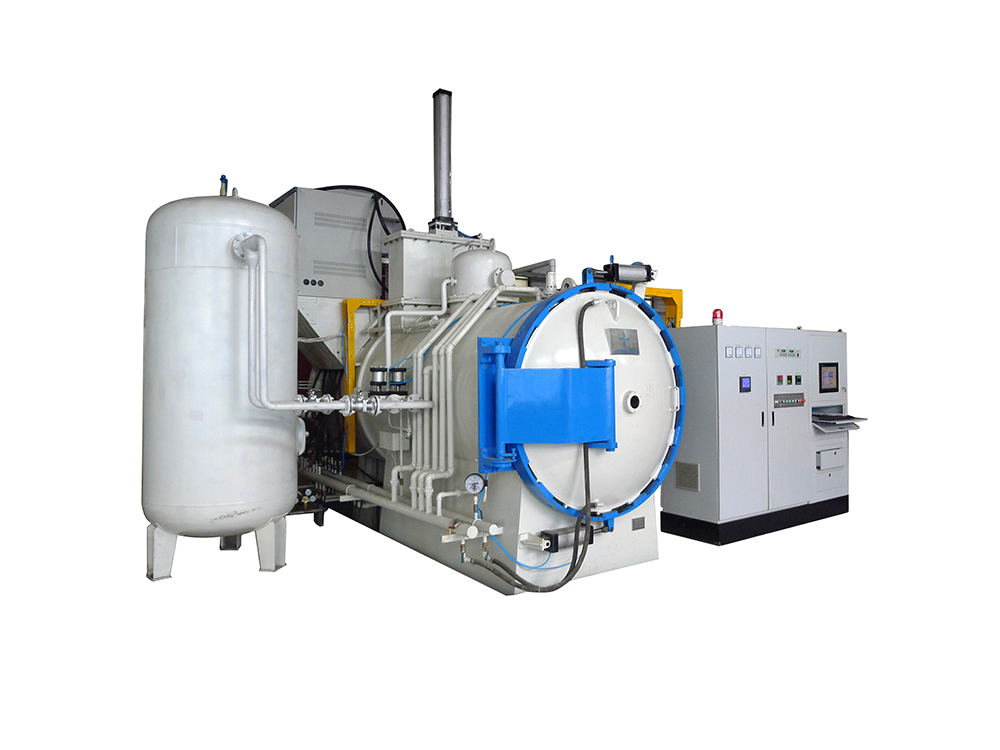Advantages and functions of vacuum heat treatment
2023/3/8 13:20:34
Heat treatment is an important basic process to improve the performance, reliability and service life of mechanical parts. Heat treatment can maximize the excavation and play the potential of metal materials, so that mechanical parts can fully meet the performance requirements and service life under various service conditions. The advantages of vacuum heat treatment are no oxidation, no decarbonization, no pollution; clean surface, small distortion; excellent comprehensive mechanical properties; wide application; high automation; high production efficiency; stable product quality and energy saving. Vacuum heat treatment can be widely used in annealing, annealing, oil (gas) quenching, high pressure (high flow rate) gas quenching, vacuum carburization, vacuum sintering, vacuum brazing and other fields.
The process characteristics of vacuum heat treatment are vacuum degassing, vacuum degreasing effect, vacuum purification effect and vacuum protection effect.
Degassing of vacuum: steel parts in the vacuum heating process reduce the furnace pressure, that is, increase the vacuum degree, the residual gas (H, N, CO, etc.) in the steel will escape (degassing), thereby improving the mechanical properties of steel parts, mold parts after vacuum quenching, plasticity, impact toughness will be improved, thereby prolonging the service life.
Vacuum degreasing effect: vacuum degreasing furnace has been widely used in metal foil, wire drawing and precision degreasing treatment of metal parts with small hole mesh. Because the grease attached to these objects belongs to the ordinary aliphatic group, which is a compound of carbon, hydrogen and oxygen, its vapor pressure is high, and when heated in a vacuum, it will quickly decompose into gases such as water vapor, hydrogen and carbon dioxide, and they are easily evaporated and pumped out by the vacuum pump. However, before vacuum heat treatment, the workpiece should still be cleaned and loaded into the furnace. Avoid a large amount of grease to contaminate the furnace and contaminate the vacuum pump to avoid damaging the performance of the vacuum pump.
Vacuum purification: the metal surface has oxide film, slight rust, nitrides, hydride, etc., when heated in vacuum, these compounds are reduced, decomposed or volatilized and disappear, so that the workpiece obtains a smooth surface.
Vacuum protection: when almost all metals are heated in an oxidizing atmosphere, the metal surface will oxidize and lose the luster of the metal, and vacuum heating can make the metal material maintain the original surface brightness.
Previous:What is the working principle of vacuum annealing furnace
Next:Vacuum furnace heating and heat preservation material selection
 Recommended
Recommended
 hot news
hot news
-
 Vacuum degree of vacuum furnace and choice2023/03/08
Vacuum degree of vacuum furnace and choice2023/03/08 -
 Choose in vacuum furnace effectively2023/03/08
Choose in vacuum furnace effectively2023/03/08 -
 The role of vacuum furnace shell and choice2023/03/08
The role of vacuum furnace shell and choice2023/03/08 -
 The classification and selection of vacuum furnace control system2023/03/08
The classification and selection of vacuum furnace control system2023/03/08 -
 Vacuum furnace heating and heat preservation material selection2023/03/08
Vacuum furnace heating and heat preservation material selection2023/03/08 -
 Advantages and functions of vacuum heat treatment2023/03/08
Advantages and functions of vacuum heat treatment2023/03/08 -
 What is the working principle of vacuum annealing furnace2022/04/14
What is the working principle of vacuum annealing furnace2022/04/14 -
 Vacuum furnace can better control the corresponding metal oxygen content2022/04/14
Vacuum furnace can better control the corresponding metal oxygen content2022/04/14 -
 How about a vacuum furnace? How does it work2022/04/14
How about a vacuum furnace? How does it work2022/04/14 -
 Vacuum furnace annealing but the oxidation is still serious2022/04/14
Vacuum furnace annealing but the oxidation is still serious2022/04/14

 24-hour hotline
24-hour hotline




